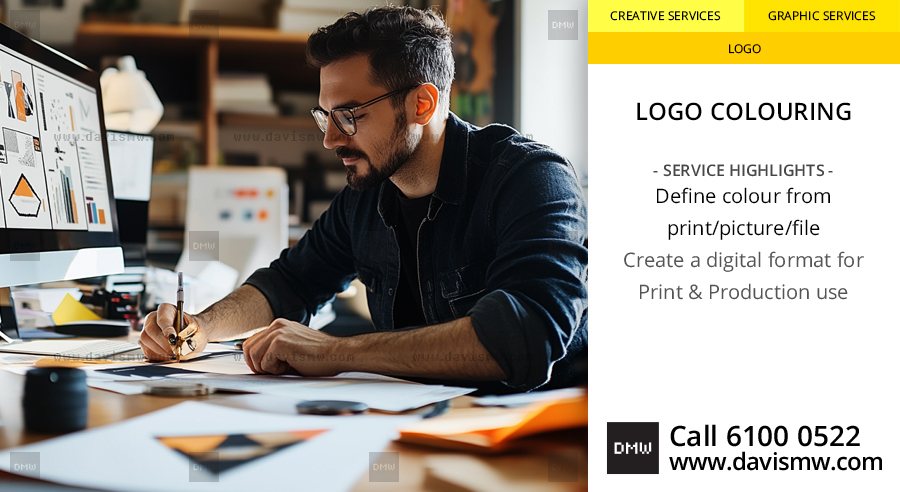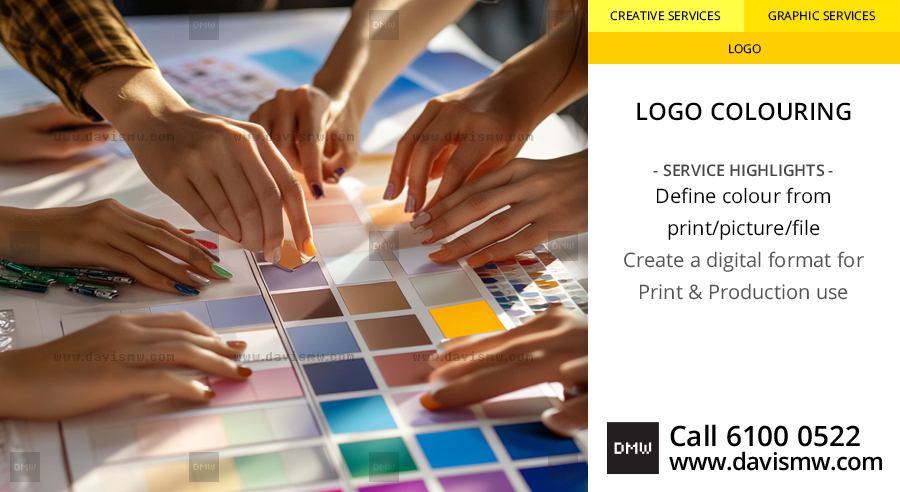Introducing Davis Materialworks' Logo Colour Services – your definitive solution for expert logo colour consultations.
At Davis Materialworks, we are not just about materials but also colours. Our Logo Colour Services division excels in colour determination for different media, providing specialised guidance for RGB colours suited for screen-based media and CMYK colours for print. Regardless of the platform, your logo's vibrancy remains unwavering, ensuring its potency is carried across all platforms.
In our quest to provide comprehensive solutions, we extend our services to Pantone colour identification in solid coated and uncoated varieties and Hex colours. This ensures a broad spectrum of colour precision tailored to your project's unique requirements.
Understanding the vital role colour schemes play in shaping your brand image, we also create custom light and dark colour schemes. These meticulously chosen palettes integrate seamlessly with your primary logo colours, establishing a unified and professional aesthetic across all your branding assets.
Over time, we've observed clients' common missteps with colour modes – using RGB for print or CMYK for the screen, resulting in logos that appear off-colour or washed out. Misdirection from designers or agencies has led clients to use unnecessary Pantone colours. We've even seen a client advised to use 7 Pantone colours for a business card, a route that was neither cost-effective nor practical, where CMYK could have provided a simple solution.
Davis Materialworks' Logo Colour Services was established to alleviate confusion and ensure efficient colour selection and application. Our goal is to simplify the complex world of logo colours, so your focus can remain on growing your business.
Choosing Davis Materialworks means entrusting your brand to a professional team that ensures your logo always looks its best. We bring clarity, precision, and confidence to your branding strategy. Whether your needs are for the screen, print, or special projects, we're here to determine the perfect colours for your logo and provide suitable files for optimal use. With Davis Materialworks, your logo colours are managed with precision and care, empowering your brand to leave a lasting impression.
Terms & Conditions:
- Prices quoted are NETT, prices with No additional GST.
- Service includes logo colour service from the client logo file and image, not proposing logo colour or designs.
- Service includes determining the right colour scheme RGB & CMYK. (Exclude Pantone Solid Coated/Uncoated, Hex colour, and Alternative colours are subject to charges.)
- Service includes files like Jpeg, Png and high-resolution PDF.







